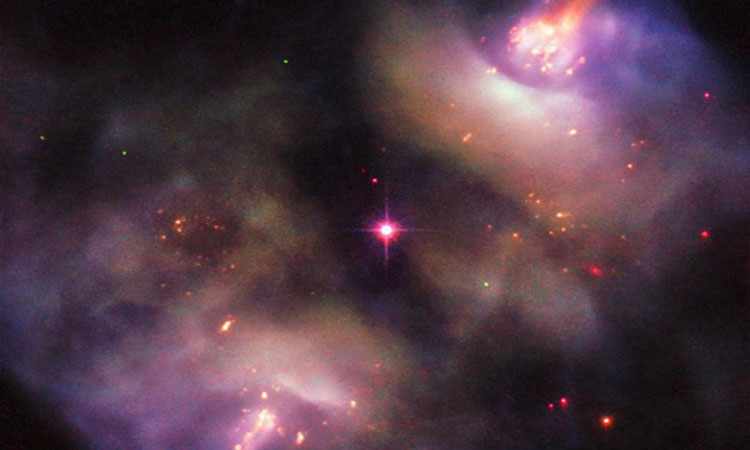The Hubble Space Telescope records images of dying stars
The latest image of the planetary nebula NGC 2371/2 exiting the star in the Gemini constellation was taken and published by NASA last week.

Planetary nebula NGC 2371/2 is released from a dying star.(Photo: UPI).
The two huge luminescent clouds (located in the upper right corner and the lower left corner of the image) look like two separate objects, but these are actually parts of the planetary nebula NGC 2371/2 , which was expelled by a dying star in Gemini, about 4,400 light-years from Earth. The image was recorded by NASA's Hubble space telescope.
The planetary nebula NGC 2371/2 in fact has nothing to do with the planet as its name suggests, but is formed from a red giant like the Sun (at the center of the image). In the final phase of the star, it releases the outer shell into space, forming a glowing cloud. The phenomenon only takes place for a few tens of thousands of years, relatively short compared to the normal life of billions of years of a star.
According to experts at the European Space Agency (ESA), the planetary nebula NGC 2371/2 will continue to change over the next few thousand years before disappearing completely. The star will cool and fade, eventually becoming a white dwarf.
Strange halo around planetary nebula IC 5148 stunning
- Learn about Hubble Space Telescope
- Hubble Space Telescope has a problem
- NASA restarted the Hubble telescope replacement project
- April 25, 1990: The Hubble Space Telescope goes live
- The blind man 'views' the universe from Hubble through a 3D printer
- NASA shares incredible images of Bubble Nebula
- Maintenance of Hubble Space Telescope
- How will the sun of the solar system die?
- Hubble telescope's successor
- Hubble Space Telescope is reborn
- Ghost images in the universe
- The most beautiful images of 2016 taken by Hubble glasses
 Van Allen's belt and evidence that the Apollo 11 mission to the Moon was myth
Van Allen's belt and evidence that the Apollo 11 mission to the Moon was myth The levels of civilization in the universe (Kardashev scale)
The levels of civilization in the universe (Kardashev scale) Today Mars, the sun and the Earth are aligned
Today Mars, the sun and the Earth are aligned The Amazon owner announced a secret plan to build a space base for thousands of people
The Amazon owner announced a secret plan to build a space base for thousands of people